
The Planets
It wasn’t to last. Slowly the young Sun grew brighter, its increased energy output causing temperatures to gradually rise, which in turn began to lift more and more water vapour into the air, thickening the atmosphere and sealing the planet’s fate. Although the oceans of Venus may have persisted for billions of years, as the surface warmed and the atmosphere thickened, the destiny of this planet was already set, driven by an unstoppable process we have recently become very familiar with here on Earth.
The greenhouse effect is a process that has the power both to protect and to destroy a planet, but despite this power it actually boils down to some pretty simple physics. It’s all about how sunlight – solar radiation – interacts with the constituent parts of an atmosphere. In the case of the Earth, as solar radiation hits our atmosphere some of it is reflected straight back out into space, some is absorbed by the atmosphere and clouds, but most of the sunlight (about 48 per cent) passes straight through the atmosphere and is absorbed by the Earth’s surface, where it is heated up. The reason so much solar radiation makes it to the surface is because the gases in our atmosphere, like water vapour and carbon dioxide, are transparent to light in the visible spectrum. When you think about it, that’s pretty obvious because there’s a source of visible light in the sky, the Sun, and we can all see it! But it’s a different story when that sunlight heats the surface of the Earth and re-radiates back out not as visible light but as the longer-wave infrared light – thermal radiation.
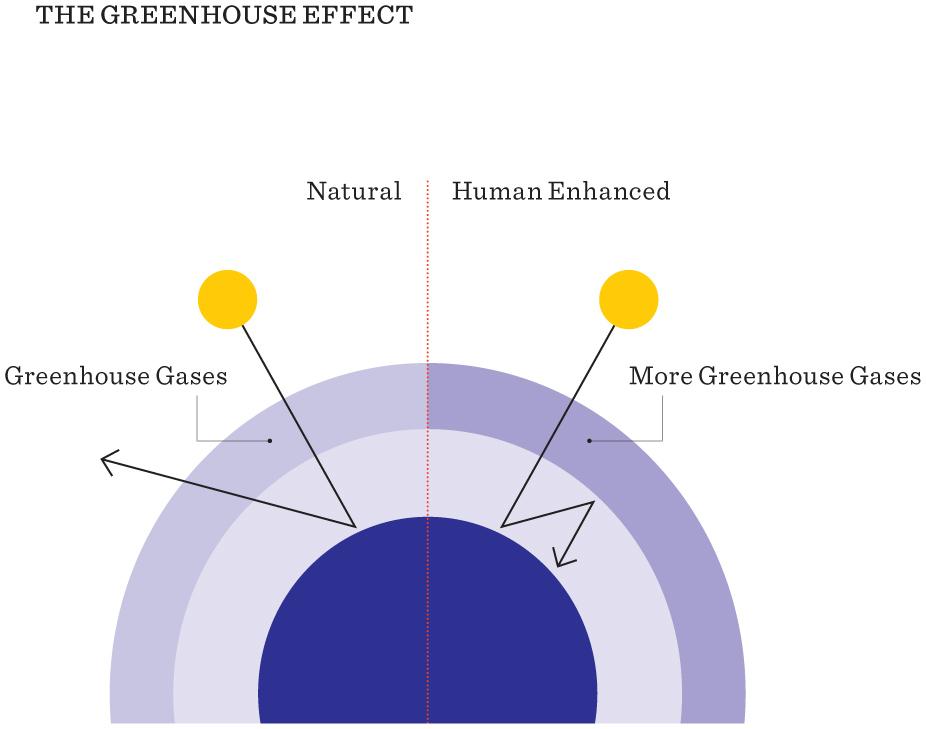
© HarperCollins
‘Venus hasn’t stopped heating up, and we believe that as the Sun continues to age, billions of years into the future, it’s going to continue getting hotter. Eventually that means that Earth will go the way of Venus.’
David Grinspoon, astrobiologist
We can’t see this light, but as it radiates back out from the Earth’s surface, carbon dioxide and water vapour absorb the infrared, trapping that energy, and so the planet maintains a higher temperature that is intimately linked to the constituent parts of the atmosphere. The higher its level of gases like water vapour, carbon dioxide, methane and ozone, the greater the greenhouse effect and the bigger the uplift in temperature. Despite the very real threat that this now poses to the future of our planet, the greenhouse effect on its own is not necessarily a bad thing – the Earth would be at an average temperature of around minus 18 degrees Celsius without it – but as we are currently witnessing here on Earth, shift the balance of those gases and things can change very quickly.
At some point in Venus’s past, the levels of water vapour lifted into the atmosphere by the warming sun pushed the greenhouse effect to become more intense. With less and less of the Sun’s energy escaping, the ambient temperatures began to rise exponentially until the day came when the last raindrops fell onto the surface of the planet, the heat evaporating the rains long before they could reach the ground. Venus had reached a tipping point: with the increasing temperatures feeding more and more water vapour into the atmosphere, a runaway greenhouse effect took hold, driving away the oceans. This led to the surface of the planet getting so hot that carbon trapped in rocks was released into the atmosphere, mixing with oxygen to form increasing amounts of another greenhouse gas – carbon dioxide. With no water left on the surface and no other means to remove it, carbon dioxide built up in the atmosphere, setting the planet on a course that would result in the scorched body that we see today.
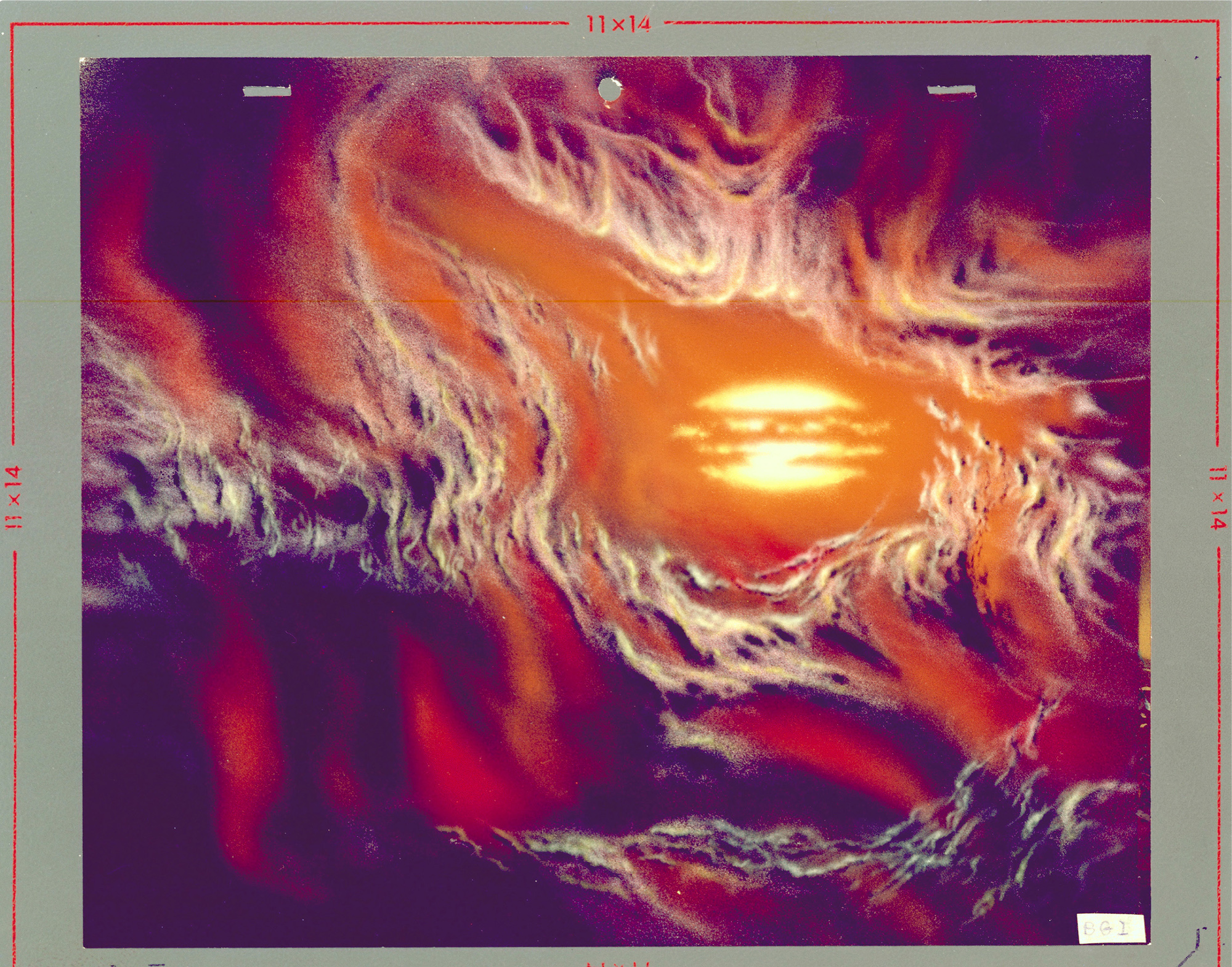
© NASA
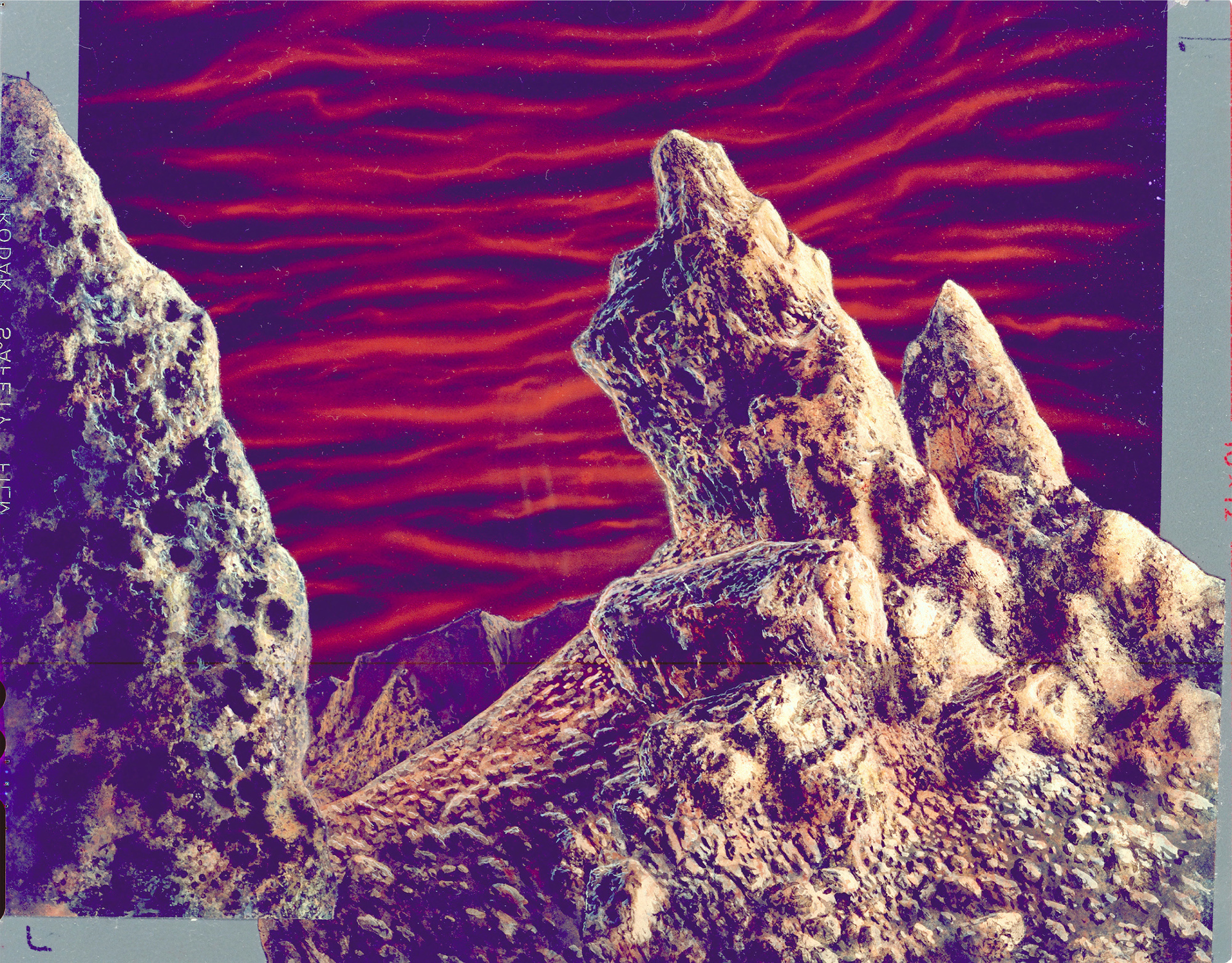
© NASA
In 1977, in the days before computer-generated imaging, NASA commissioned artist Rick Guidice to paint illustrations of the surface of Venus, based on images received from Pioneer probes.
And so Venus’s moment in the Sun came to an end. Earthlings take note: when it comes to the greenhouse effect, there is a precariously thin line between keeping a planet warm and frying it.
THE END OF EARTH?
Of the four rocky worlds, only one has managed to navigate through the instability and constant change of our Solar System over the last 4 billion years and maintain the characteristics needed to support life. Mercury lost its fight early as it was flung inwards towards the Sun, Venus flourished at first, before slowly coming to the boil, and Mars, the runt of the litter, became a frozen wasteland long ago. Only Earth, uniquely amongst the planets, has persisted with an adequate stability over the last 4 billion years to allow liquid water to remain on its surface and an atmosphere just thick enough to keep its climate calm – not too hot and not too cold. Events have rocked us and extremes of temperature have waxed and waned, but never outside of the parameters needed to harbour life. In a chaotic solar system, filled with planetary might-have-beens, Earth is a shining example of stability, and the evidence for this is to be found in every nook and cranny of the planet.
Today Earth is dominated by life; the land and seas are teeming with millions upon millions of species, with thousands of new life forms discovered each year. Somehow, even when disaster threatened, the Earth has remained a living world; while endless species have come and gone, life has always persisted. It’s woven into the fabric of the planet – an integral part of every continent and every ocean. Life plays a crucial role in maintaining the balance of the atmosphere that keeps our planet temperate, but we know for certain it cannot last.
In a chaotic solar system, filled with planetary might-have-beens, Earth is a shining example of stability.
The Kamchatka Peninsula in Eastern Siberia is one of the most inhospitable places on Earth. A volcanic wasteland, peppered with thousands of hot springs, it’s here that we find some of the toughest living things. Extremophiles survive here that are able to withstand temperatures and pH levels higher than any other land-based life forms we have ever discovered. Kamchatka is part of the Pacific ring of fire, and despite its remoteness, biologists have long been enticed here to explore its toxic, bubbling cauldrons for signs of life. Complex life, animals and plants struggle to survive in temperatures above 50 degrees Celsius, so searching for life here is all about searching for single-celled life forms, bacteria and archaea – ancient microorganisms – that are somehow able to endure in this hostile environment. Life forms like Acidilobus aceticus, an archaea that can be found in a hot spring where the water is so acidic it reaches a pH of 2, and where temperatures rise to 92 degrees Celsius. In other parts of the hydrothermal field, bacteria like Desulfurella acetivorans have been discovered, which happily live in pools that are touching 60 degrees Celsius, but it’s these that are the real hotheads. In one of the biggest and hottest pools investigated by scientists, a large number of microbes have been found living in temperatures approaching 97 degrees – making it one of, if not the hottest environment ever studied for signs of life on land.
But to find the greatest hotheads on Planet Earth you need to look not on land but deep beneath the sea. In the furthest depths of the Atlantic, around the black smoker hydrothermal vents blurting out of the ocean floor, we’ve found strains of archaea that can survive temperatures of 122 degrees Celsius, and perhaps even higher.
These rare life forms live at the very edges of biology. Unique adaptations to their cellular chemistry enable the proteins and nucleic acids that create the structure of the microorganism to function, while the membranes that are protecting the cells utilise different fatty acids and lipids to keep the cell stable at the higher temperatures.
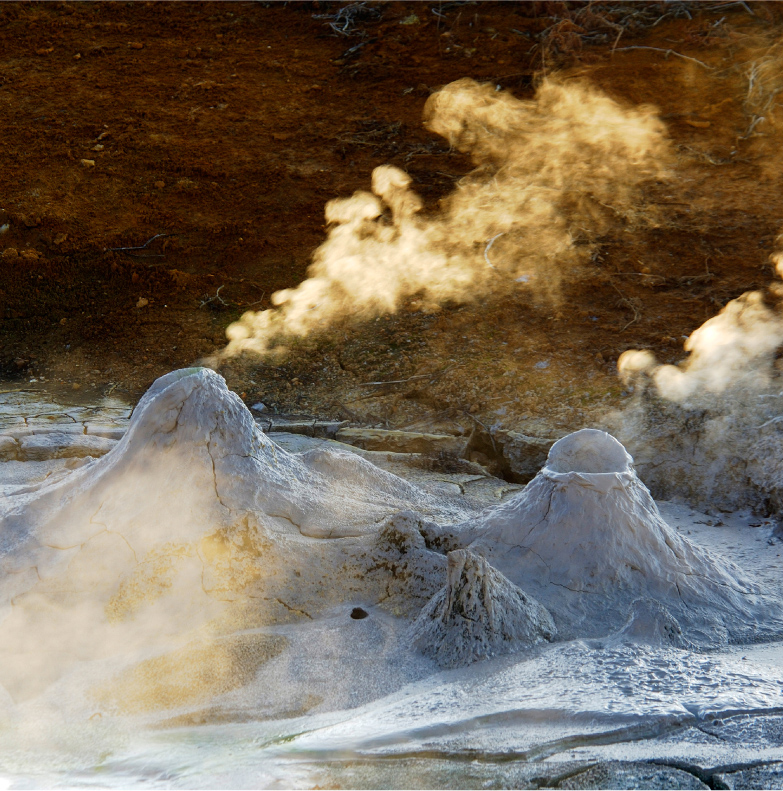
© Igor Shpilenok / naturepl.com
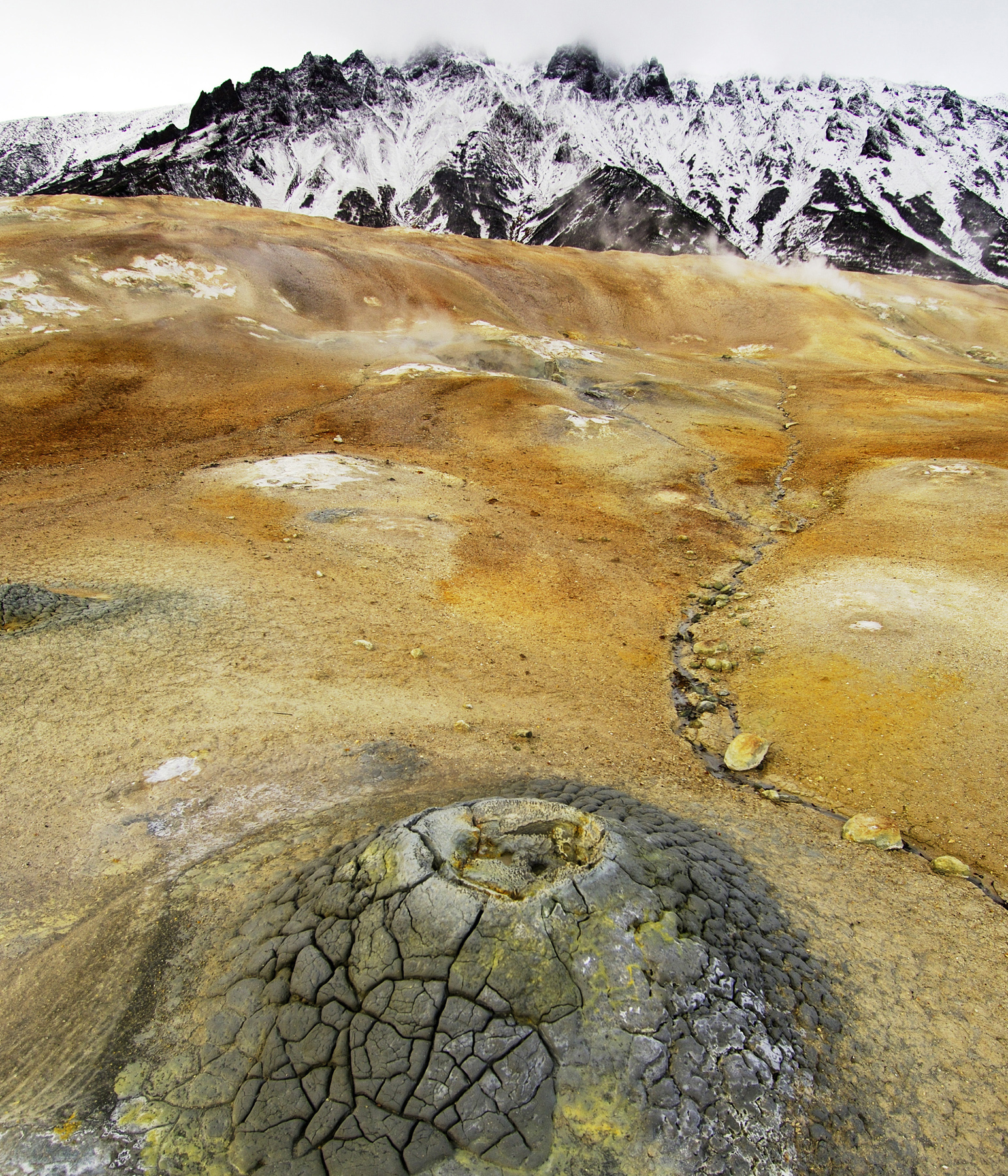
© Igor Shpilenok / naturepl.com
Russia’s Kamchatka Peninsula is one of Earth’s most inhospitable areas; the volcanic landscape gives us an insight as to how planet Earth might appear when it becomes too hot for life.
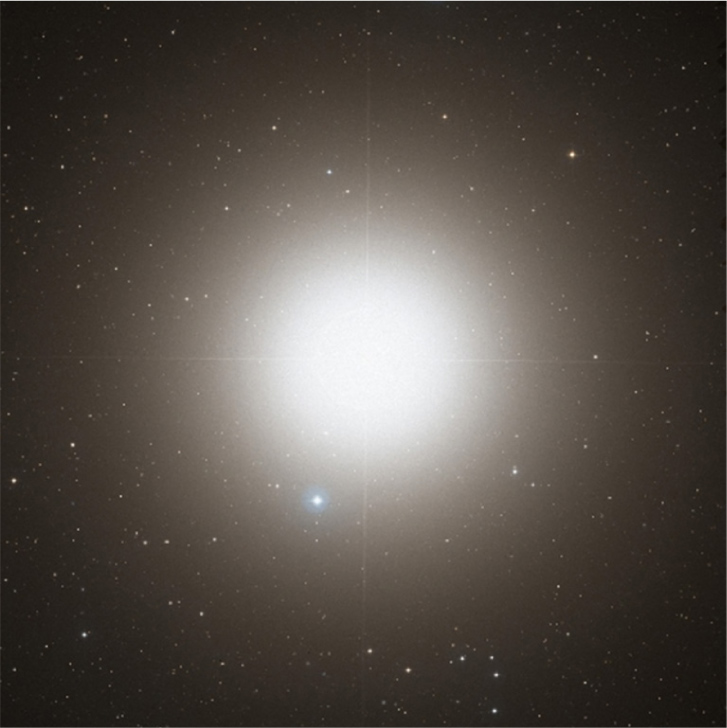
© DSS2 / MAST / STScI / NASA
Arcturus, one of the brightest stars in the Northern Hemisphere, which in its early history would have had similar characteristics to Earth.
Perhaps there are even tougher life forms that we are yet to discover, but the thermophilic microorganisms that we have so far identified and investigated in places like Kamchatka all point to the fact that life has its limits. Evolution by natural selection can only adapt so much, and even though it’s impossible to imagine what life on Earth will look like in a few hundred million or even a few billion years’ time, we know that biology is constrained by thermodynamics, and so we can say with some certainty that there will come a time when the Earth is too hot for any living things to exist. Natural selection will eventually run out of options as the laws of physics outplay it, and all life will come to an end.
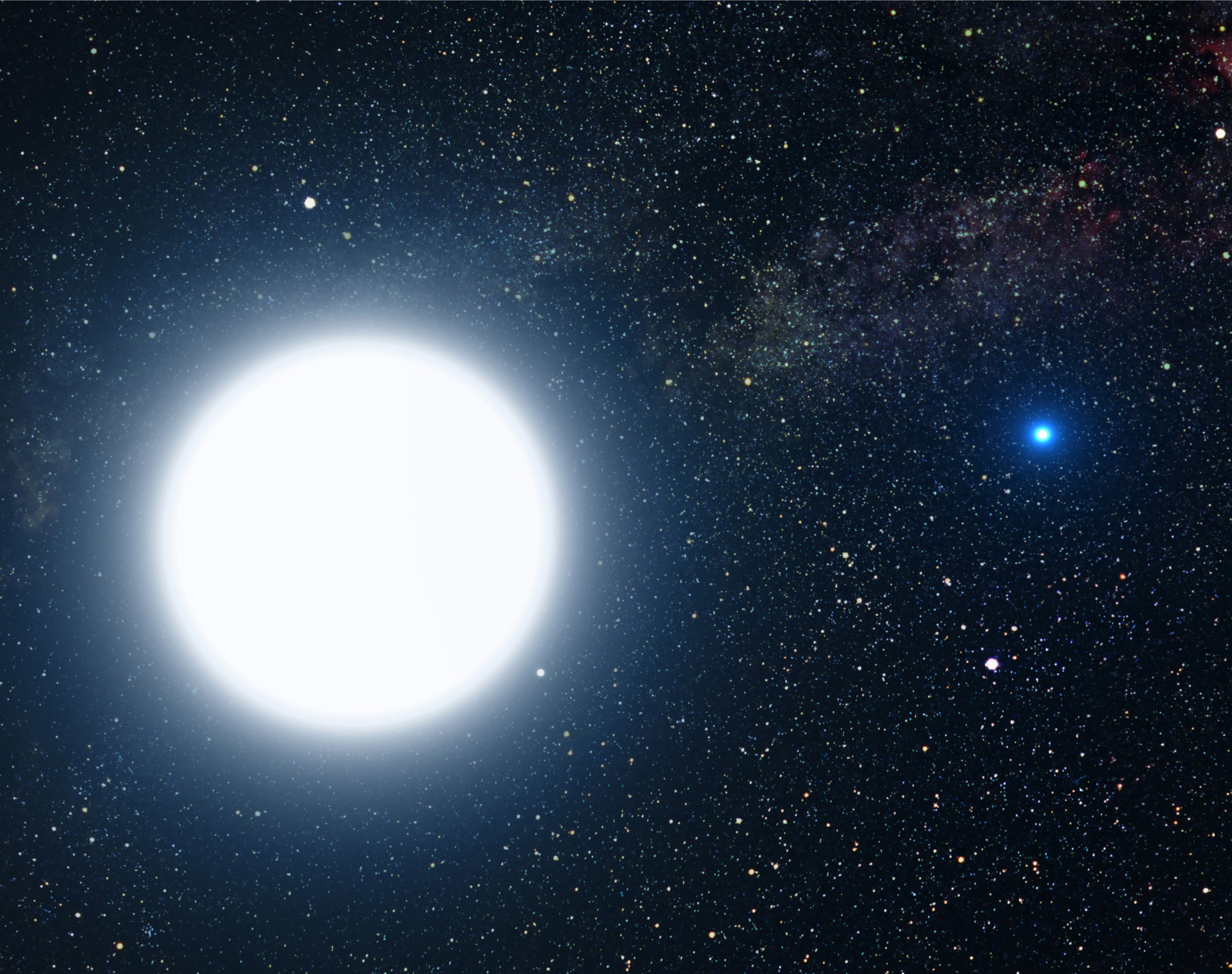
© NASA, ESA and G. Bacon (STScI)
The blue white-dwarf star Sirius B (pictured to the right of Sirius A) has burned out to a core the size of Earth, giving us an insight into the future of our planet.
When this will happen no one can be certain, but as the Sun ages and grows hotter, temperatures on Earth will rapidly rise. Today the average surface temperature on the planet is 14.9 degrees Celsius, but with just a 10 per cent rise in the Sun’s luminosity, the average temperature will rise to 47 degrees Celsius and climbing. The increased temperatures will raise great storms across the planet. The rains will remove carbon dioxide from the atmosphere and it will be locked away as newly formed sedimentary rock. Trees and plants will struggle as they are robbed of the gas that sustains them, until eventually photosynthesis will cease. The lungs of our planet will fail and the precious oxygen that green plants and algae produce will dwindle. With the primary food source gone, the food chain will collapse and the age of complex life on Earth will draw to a close.
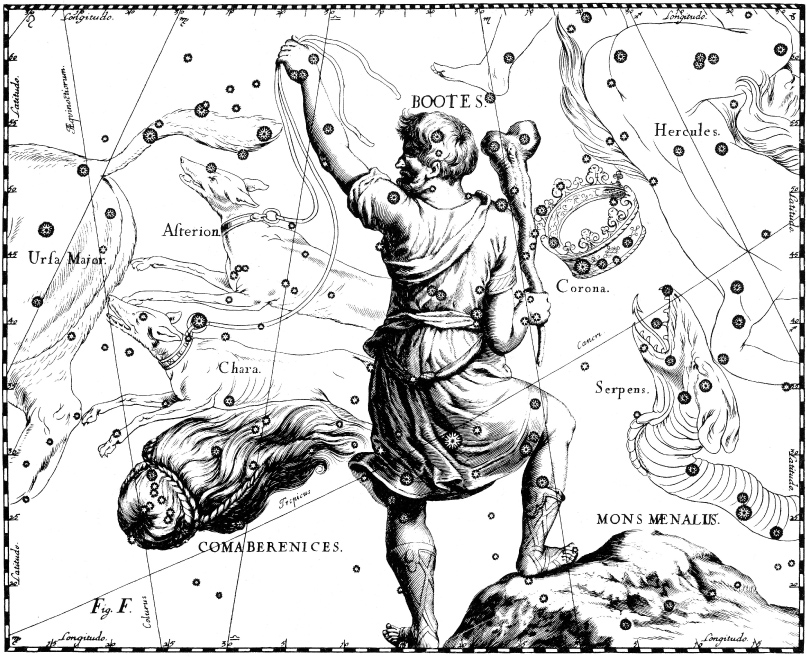
© Science History Images / Alamy Stock Photo
The diamond-shaped constellation, Boötes, has been known to scientists for centuries, described by Ptolemy in the second century.
Astrobiologist David Grinspoon on Venus as a window on Earth’s future
‘Left to its own devices, Earth will go the way of Venus. Now, this is nothing to lose sleep over right now because we’re talking at least a billion years, probably more like a couple of billion years in the future. We have more immediate concerns, but as we do compare the planetology and look at the exoplanets around other stars and consider the variety of planets in the universe and consider not just the past, but the future of our climate in our solar system, it is something to think about, that the current state of Venus is probably some kind of a window into the distant future of Earth under the warming sun.’
Heat-loving extremophiles may flourish for millions of years more, but eventually nuclear physics will have its way and as average temperatures race above 100 degrees Celsius, the last pockets of life will be extinguished from the Earth.
We can say with confidence this is going to happen because we can plot the future of our Sun far more precisely than the future of the Earth. Our understanding of nuclear physics allows us to predict what happens inside the cores of stars and thus we can see the past, present and future of stars like ours written across the night sky.
The heavens are filled with shining examples of stars that give us a glimpse into the future of our Sun. Arcturus, for example, in the constellation Boötes, is one of the brightest stars in the Northern Hemisphere. It’s around the mass of the Sun, perhaps a little bit heavier, and so in the distant past would have had remarkably similar characteristics to our own star. Today, though, Arcturus is 6 to 8 billion years old, potentially 3 billion years older than the Sun, and as it is no longer a main-sequence star, it is now in the red giant phase. Its fuel exhausted, it has swollen up to 25 times its original diameter and is around 170 times as luminous, despite the fact that as its core slowly burns out it is cooling.
To see even further into the future, we need to look towards the brightest star in the northern sky – Sirius. The dog star, as it is commonly known, is twice the mass of the Sun and still fully in the main sequence. But obscured by the glare of Sirius A is a faint companion, Sirius B. This is a star that has already burnt through its fuel, swollen into a red giant and the outer layers have drifted off into space, leaving the fading core of the star about the size of the Earth, known as a white dwarf.
These stars are just two examples amongst many that point us towards the ultimate fate of our Sun, a fate that we believe will play out over the next 5 billion years or so.
Just like Arcturus, as the Sun exhausts its hydrogen fuel, its outer edge will inflate and it will enter a red giant phase. Expanding millions of kilometres out into space, it will engulf Mercury first. Venus’s fate will be sealed next as the Sun expands further. Some models predict that Earth may just escape the fiery end of its neighbours – heated to 1,000 degrees Celsius but hanging on beyond the edge of the dying star as its orbit extends out due to the lessening mass of the Sun. Dead but not destroyed, Earth and Mars will orbit as burned-out relics of their former selves. The era of the four rocky inner planets will be over, the billions of lives lived on the surface of one of them nothing but a distant memory, but within our Solar System lies another family of rocky worlds whose moment in the Sun may be to come.
A NEW HOPE
Far beyond the asteroid belt, millions of miles away from the sun-drenched planets of the inner Solar System, the gas giants of Jupiter and Saturn are home to another family of rocky worlds. Jupiter alone has 79 known moons orbiting it, a menagerie of satellites of multiple shapes and sizes. We’ve been peering at these moons since Galileo Galilei spotted four of them (Io, Europa, Ganymede and Callisto, known as the Galilean moons) over 400 years ago, with his telescope, transforming our understanding of our place in the Solar System.
Today we have explored the Galilean moons not just from afar but close up and found them to be dynamic worlds. Io is fiercely volcanic and Europa, the ice moon, shows tantalising evidence on its surface pointing to a sub-surface ocean sitting below its icy crust. Ganymede and Callisto make up the final two Galilean moons, and just like Europa they are rocky worlds with an abundance of water ice on their surfaces and perhaps their own oceans lurking beneath. These three rocky, frozen worlds are all sitting in the cold outreaches of our Solar System, touched by the distant Sun but barely warmed, lying dormant until perhaps one day the ageing Sun will reach out and turn these bodies into ocean worlds for the very first time.
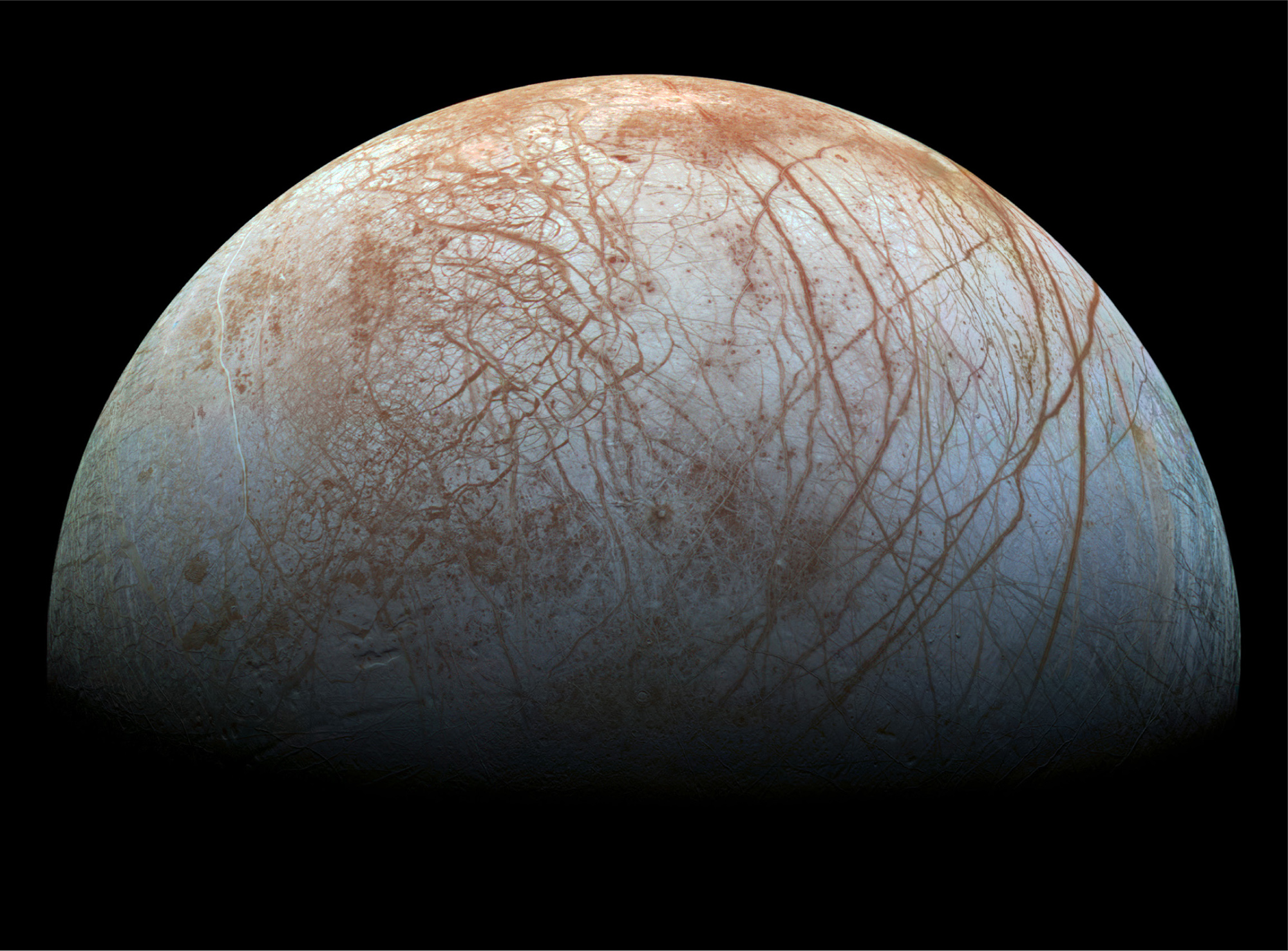
© NASA/JPL-Caltech/SETI Institute
Created by images taken by the Galileo spacecraft in the late 1990s, this colour view shows Saturn’s icy moon Enceladus – perhaps our closest candidate for sustaining life as we know it.
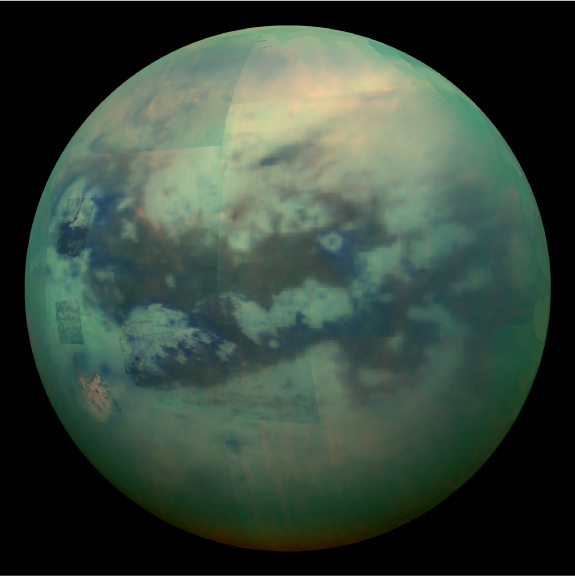
© NASA/JPL/University of Arizona/University of Idaho
Titan, a frozen moon shrouded in its own atmosphere, as seen from Saturn.
‘The world is my country, science is my religion.’
Christiaan Huygens
The next planet out, Saturn, also has its ever-growing family of moons. Amongst its collection of over 60 confirmed satellites are Titan, the only known moon with a dense atmosphere and liquid lakes on its surface (though they are primarily methane, not water), and Enceladus, a frozen ice moon just like Europa with a liquid ocean deep beneath its ice. We will come to Enceladus in detail in Chapter 4, but for now it’s intriguing to note that this icy moon may be our best current candidate as a second life-sustaining world in our Solar System. Until we go back and explore further we can’t be certain what lies below its surface, but the possibilities that the Cassini probe has so tantalisingly hinted at make it one of the most exciting places for us to visit within the next generation of interplanetary expeditions.
All these ice worlds, sitting dormant in the frozen reaches of the Solar System, offer the promise of a very different future, one in which the rocky worlds of the inner Solar System have been reduced to cinders, and a new generation of worlds waits to awaken. Ice worlds will become water worlds, warmed by the expanding Sun, until our dying star ultimately collapses into a white dwarf.
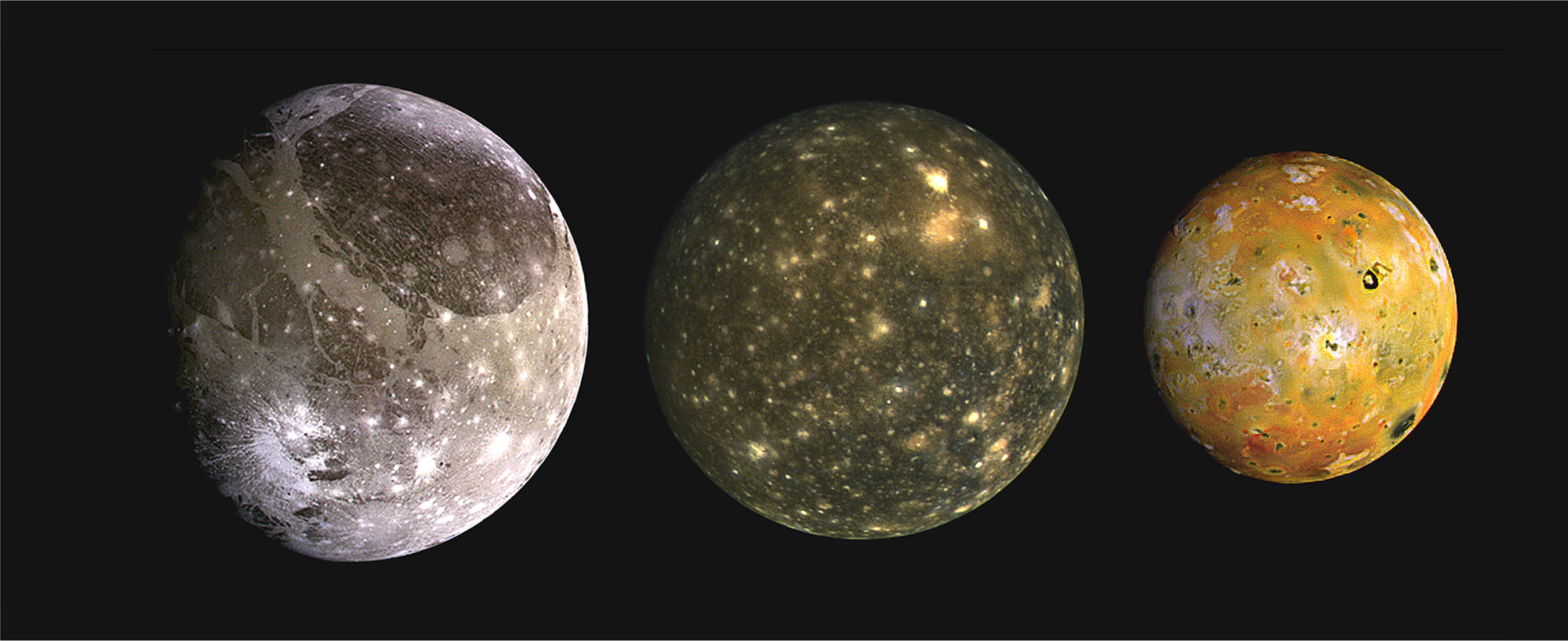
© NASA/JPL/DLR
From left to right, the moons of Jupiter – Ganymede, Callisto and Io – are dynamic worlds; the former two lie dormant, waiting to be awakened by the warmth of the Sun.
Конец ознакомительного фрагмента.
Текст предоставлен ООО «ЛитРес».
Прочитайте эту книгу целиком, купив полную легальную версию на ЛитРес.
Безопасно оплатить книгу можно банковской картой Visa, MasterCard, Maestro, со счета мобильного телефона, с платежного терминала, в салоне МТС или Связной, через PayPal, WebMoney, Яндекс.Деньги, QIWI Кошелек, бонусными картами или другим удобным Вам способом.
Вы ознакомились с фрагментом книги.
Для бесплатного чтения открыта только часть текста.
Приобретайте полный текст книги у нашего партнера:
Полная версия книги
